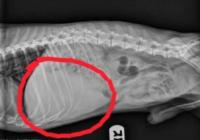Liver Disease
Our pets, just like us, have many different organs that make up their bodies. All are important and work together to keep your dog or cat healthy. After the brain and heart, the liver is arguably the most important organ in the body. It is responsible for so many different body functions, and if it ceases to work, life ends.
What is the Liver and What Does It Do
The liver is an organ in your pet's body that has several different lobes (sections) and is found at the top part of the abdomen. The different cells that make up the liver are called hepatocytes, and they are remarkable in that damaged ones can regrow and regain normal function again.
The liver is, in some way, involved in almost everything that goes on in the body. From building and breaking down proteins, fats, and carbohydrates to storing vitamins and minerals and helping to digest nutrients, it is quite an understatement to say the liver is very important.
Signs of Liver Disease
The early signs of liver disease are similar to many other diseases and without proper diagnostics are not very helpful in reaching a definite diagnosis. Early symptoms of liver disease can include: decreased appetite, vomiting, diarrhea, weight loss, and drinking and/or urinating more.
In severe cases, your pet may become feverish, lethargic, hesitant to move around, and show signs of pain. He may also develop secondary problems like anemia, bleeding disorders (including spontaneous bleeding from the stomach or gums), and may develop jaundice (a yellowing of his gums, skin, and the whites of his eyes). As liver disease progresses, problems can include hepatic encephalopathy, fluid building up in the abdomen, swollen lower limbs, seizures, and other neurological signs.
Causes of Liver Disease
There are many different causes of liver disease in pets, ranging from acute to chronic disease processes. There are a number of diseases, toxins, medications, and other chemicals that can cause liver damage. For instance, conditions such as hyperthyroidism, diabetes, Cushing’s syndrome and pancreatitis are common diseases that can harm your pet’s liver. Tumors, gallstones, even viral and bacterial infections, hepatitis and autoimmune diseases can cause liver disease. Other toxins, including your pet’s prescription medications, and other drugs and chemicals your pet may be exposed to, can harm the liver as well.
Diagnosing Liver Disease
Liver disease is diagnosed through various methods, including physical examination and specialized testing. Blood tests including measurements of liver enzymes, ammonia levels, bile acids, and clotting factors may be done to support a diagnosis of liver disease. Urine tests, X-rays, ultrasounds, CT scans, and cultures are frequently done as well. In many cases, a biopsy is the only way to conclusively diagnose what is causing liver disease in your pet.
Treatment
Treating liver disease or liver failure is based on treating the process that is causing the disease. For instance, liver failure caused by infection is often successfully treated with the appropriate antibiotics or antiviral therapies.
Liver failure caused by exposure to drugs, toxins, or poisons is often reversed when your pet is no longer exposed to the cause. Obstructions of bile ducts and tumors can often be treated with surgery.
Successful treatment and the overall prognosis in any of these circumstances often depends on how long your pet has been sick, the extent of the damage, and whether the underlying disease will be responsive to medication or is surgically possible to repair.
All articles are reviewed and maintained by whiskerDocs team of veterinary experts.



